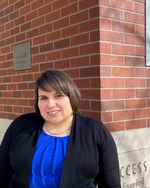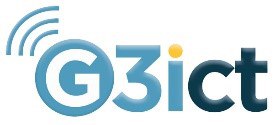Recipes for Success, Integrating Options for Impact
Posted on May 08, 2019

Director, David Banes Access and Inclusion Services and Board Member, DATEurope
Bruce Springsteen once wrote “57 channels..and nothing on” - an indictment of cable TV when quantity of programming seemed more important than quality. It might need updating in 2019 when we think about accessibility to “1001 channels..and something on each one!”
This random thought floated in my head while attending a Microsoft accessibility event to explore the range of of access tools now available including those within Windows, MS Office Suite, other applications and standalone tools for persons with disabilities. The diversity of these tools was admirable, but as an access specialist I was surprised at how many I had been unaware about.
I am active on social media, read widely and attend conferences throughout the year. It struck me that if I, and many others in the room, had been unaware of the solutions available then what chance was there for teachers, therapists, parents and persons with disabilities themselves to be fully aware?
The range of solutions include not only those developed by Microsoft, or Apple, Google, and Amazon Each integrate access tools into the devices they sell and there are 1001 add-ons and additional tools that add functionality and value to devices and platforms to enhance ease of access.
In the face of this maelstrom of innovation, traditional approaches to assimilating information and implementing access from the possible options do not appear to be effective and as a result, the impact of new technologies is reduced.
Establishing access through, and with technology, is not simply a case of installing an app or buying a peripheral. Access lies in integration of hardware with the software, with a role played by operating system and applications with settings and options configured to fully meet the needs and preferences of an individual. These combinations are fluid, changing as we switch devices, or as our needs and preferences change throughout the day. Technology users are a complex bunch.
It feels like we have been asked to prepare a meal for friends, each with different tastes. So we visit the market to buy ingredients without knowing what we plan to cook, or which ingredients are needed. We face an uphill task.
The solution is to find ways of creating recipe books. Combinations of features which can be customized for each dinner. Recipes are a great starting point in preparing a meal but are often fine-tuned by the chef.
We have an opportunity with the advent of Machine Learning, harnessed with Artificial Intelligence (AI) to generate a wide-ranging collection of recipes as access solutions. Each recipe reflects the experience of individuals with similar needs and is based on the combinations of options that have been found and used to establish effective access.
The recipes start by establishing expectations, and the parameters we are working within. Identifying needs and the barriers to be addressed, the technology platforms and tools we have available, and the tasks to completed. Artificial Intelligence has the potential to examine the interplay between each of these and to suggest solutions. It does so by analyzing successful recipes enjoyed by others, identifying the ingredients or options we have, those we might need to add, and how to best combine these for each person.
To achieve this, we need to generate distinct datasets and then recognize patterns of integration between them. We need to first start with a set that describes our individual needs, including our experience and age, that identifies our capacity and capability to interact with technology and the barriers we experience. The second describes the tasks and activities we want to undertake and what we want to do as a result of having access to the technology. The third explores the context in which we want to undertake those tasks, at work, at home or at school, but might also describe the language or cultural norms within which we complete those tasks, and finally a dataset of the technology options available to us. Artificial Intelligence starts from these fixed points, our needs, the technology we have, and the activities we want to undertake. Thorough analysis of successful combinations and patterns of use recipes can be generated which are tailored to the individual.
Such analysis is increasingly feasible, and resources such as the GARI database, demonstrate the value of providing tools by which those with, and without, a disability can identify the composite solution they require.
Importantly, if assistive and accessible technologies are to reach a broader global population, such AI driven tools will be essential to ensure that quality recommendations are provided - even where expertise and knowledge is still only emerging. The challenge to the companies generating the ingredients is to integrate recipe analysis into their platforms, moving the agenda subtly from technology creation to implementation.




























